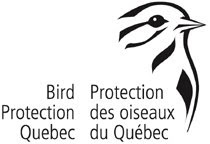Three people showed up to share a beautiful day (not), to start off the morning at Higgins, -22 C, sunny and not much wind. Species count for both Higgins, 11, and the Récré-O-Parc, 7, were quite low. The Récré-O-Parc at Sainte-Catherine, where we met two others, was a little windy and quite chilly. There was also a mist on the water which hampered views half way out to Ile aux Hérons. We did not see any Gulls at all which we found a little strange.
Rue Higgins: 3 Red-bellied Woodpecker, 5 Downy Woodpecker, 4 Hairy Woodpecker, 8 Black-capped Chickadee, 3 White-breasted Nuthatch, 1 Carolina Wren, 2 European Starling, 6 American Tree Sparrow, 2 Dark-eyed Junco, 3 Northern Cardinal, 2 House Sparrow
Récré-O-Parc: 20 Canada Goose, 3 American Black Duck, 50 Mallard, 30 Common Goldeneye, 2 Bald Eagle (imm), 4 American Crow, 1 Black-capped Chickadee
Rue Higgins: 3 Pic à ventre roux, 5 Pic mineur, 4 Pic chevelu, 8 Mésange à tête noire, Sittelle à poitrine blanche 3, 1 Troglodyte de Caroline, 2 Étourneau sansonnet, 6 Bruant Hudsonien, 2 Junco ardoisé, 3 Cardinal rouge, 2x Moineau domestique
Récré-O-Parc: 20 Bernache du Canada, 3 Canard noir, 50 Canard colvert, 30 Garrot à oeil d'or, 2 Pygargue à tête blanche (imm), 4 Corneille d'Amérique, une mésange à tête noire





